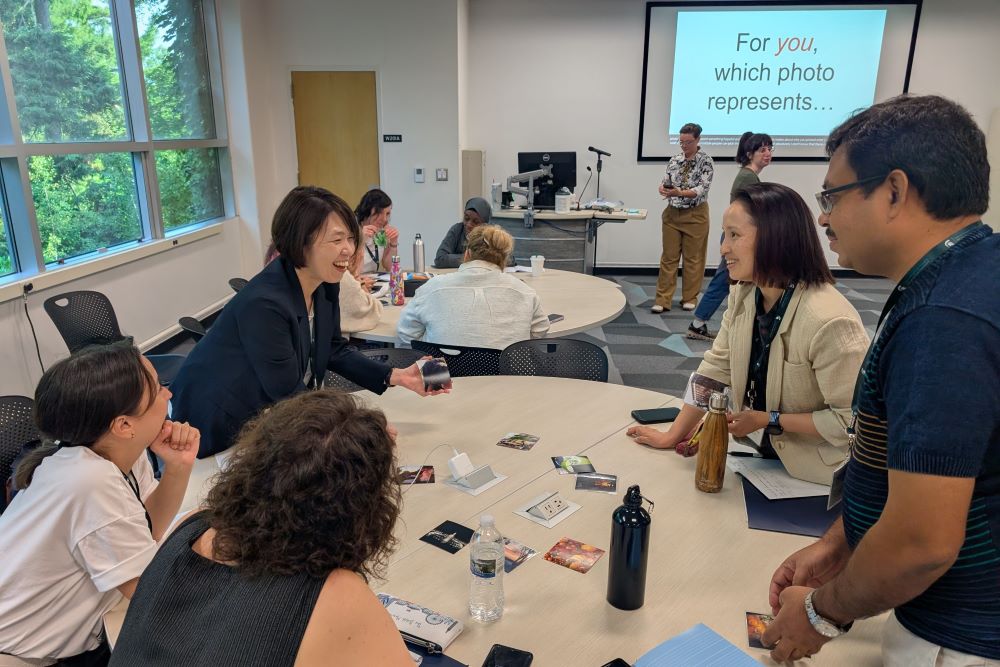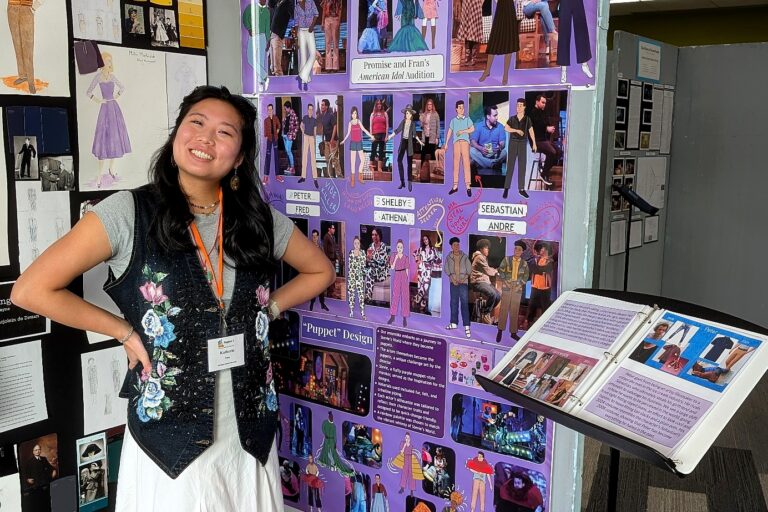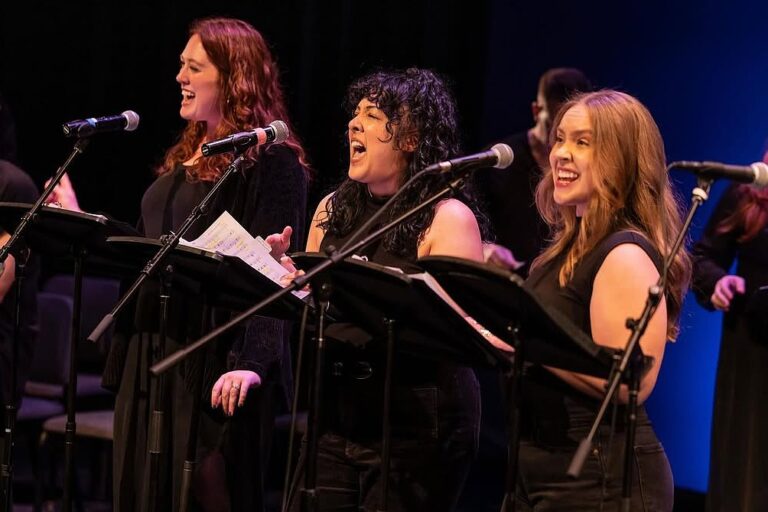This summer, more than 20 English educators from around the world came to Michigan State University’s campus to be immersed in the language and culture while also learning new creative approaches to teaching English in their home countries.
MSU was awarded $116,000 from the U.S. Department of State to lead and host the two-week exchange program “Multimodal Approaches to Content-Based Instruction: Creative Pathways to English Proficiency” during July 2025. This program highlights MSU’s reputation as global leader in English language teaching and learning.

“As a U.S. Department of State program, this initiative fostered both goodwill toward the United States and meaningful cross-cultural exchange,” said Rob Roznowski, MSU Professor in the Department of Theatre and one of the program leads. “It reinforced the value of education as a form of diplomacy, creating lasting connections between educators across borders.”
The “Creative Pathways to English Proficiency” program is part of the U.S. Department of State’s Bureau of Educational and Cultural Affairs Office of English Language Programs, and it was implemented in cooperation with the FHI 360 organization that runs the related English Access Scholarship Program in offices worldwide.


“This exchange program was about sharing multimodal approaches, which really just means we offered different artistic ways of including creativity in the English language classroom,” said Deric McNish, MSU Associate Professor in the Department of Theatre and one of the program leads. “We explored how the arts can be a more fundamental part of English language teaching.”
In this program at MSU, McNish utilized his expertise as a leading scholar and practitioner of interdisciplinary and drama-based approaches to teaching and learning. He is also part of the Department of State’s English Language Specialist program this fall where he will support English language programs and cultural understanding over the next two months in Bangkok, Thailand.
Learning Creative Teaching Techniques
Participants in “Creative Pathways to English Proficiency” explored how creativity enhances communication skills and English language learning through digital and oral storytelling, creative writing, scripting and adaptation, role-playing, character analysis, and theatrical performance.



Hadassah Levyski has been teaching English in Brazil for 26 years and she was interested in the program to learn new techniques to use with students in her classroom.
“This was not just another course. It was theory aligned with culture,” Levyski said. “There are things I can directly apply in teaching curriculum when go back to Brazil.”
She added that the program was inspiring to her as a teacher, and it also gave her a new perspective as a learner, as a student herself.
Connecting Across MSU and Michigan
Program participants interacted with MSU researchers and scholars across the university and participated in cultural field trips around Michigan including to the Michigan History Museum in Lansing and the Henry Ford Museum of American Innovation and Greenfield Village in Dearborn.



Dorota Holownia-Dudek, an English teacher for 30 years in Poland, said the hands-on experiences and visits to cultural places provided new ideas, approaches, and strategies that she could use to develop meaningful teaching materials for her students.
“Content-based learning is a universal teaching and learning process. It can be used in different ways, but it can be seen as common ground, as something we share as teachers,” Holownia-Dudek said. “We’ll be able to direct what we’ve learned to our students. The students are the final recipients.”
Another integral part of the exchange program was observing the MSU English Language Center classrooms on campus and working with instructors and international students for additional cross-cultural collaboration.
“They’re able to talk to these educators from other places, have an exchange together, and learn from each other,” said Dustin De Felice, Director of the English Language Center and one of the program leads. “They want to hear about where they’re from, what they do, how they live their lives, and having those individuals come gives us that opportunity for our students.”

For the final project, “Creative Pathways to English Proficiency” participants developed new lesson plans and taught each other using the creative approaches and practices they learned at MSU.
“In really in a short period of time, these groups gelled together, they worked together, they created their final presentations, and they had lots of amazing experiences,” De Felice said. “This was a short program, but it gave participants a really big view on what MSU does and how we are embedded in the community across the state of Michigan.”
MSU as an English Language Learning Hub
The “Creative Pathways to English Proficiency” program is one of many initiatives that make MSU and its East Lansing campus an international hub for English language teaching and cultural connections.
“Our mission is about extending our impact beyond the borders of Michigan,” McNish said. “These participants are responsible for going back to their communities and sharing their experience, not just the pedagogy, but the cultural experience too.”
This program also helped scholars at MSU learn more about the values and educational contexts English teachers experience in other countries.
“The ‘Creative Pathways to English Proficiency’ program puts the MSU College of Arts & Letters at the center of a global conversation,” McNish said. “It gives us access to incredible networks of universities and schools and people that are doing this work worldwide. It gives us access to great partnerships.”
The ripple effect impacts teachers and students worldwide, as well as members across the MSU community, forming an international community of teachers.
“This program demonstrated MSU’s identity as a truly global university. Participants represented a wide range of countries, yet were united by a shared commitment to teaching,” Roznowski said. “Experiencing the campus through their perspectives renewed my own appreciation for MSU’s resources, faculty, and global mission.”
By Beth Bonsall


